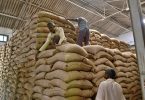[ad_1]
GIVEN the potential of the fishery industry to solve the twin problems of malnutrition and rising food prices, the sector’s leaders are urging the administration of President Ferdinand “Bongbong” Marcos Jr. to certify as urgent the bill creating the Department of Fisheries and Aquatic Resources (DFAR).
“We are one — municipal, commercial, business, aquaculture, postharvest — in voicing the need for DFAR. We want an office that has a desk. So, let us create the DFAR, we will have seafood security,” said Roberto “Ka Dodoy” Ballon, Tugon Kabuhayan convenor and a recipient of Asia’s Nobel Prize, the Ramon Magsaysay Award.
“The potential of the industry is huge, but we feel we are not consulted,” said Norberto Chingcuanco of Feedmix Specialist Inc. II.
Asis Perez, another convenor of Tugon Kabuhayan, said no DFAR bill in the previous Congresses has reached second reading, and that the establishment of this department will cost about P12 billion because there is already a Bureau of Fisheries and Aquatic Resources.
Perez previously headed BFAR, which is an agency under the Department of Agriculture.
Tugon Kabuhayan has been making the same call for a separate agency for fisheries and aquatic resources.
Official figures for 2018-2019 shows that Filipinos get their animal-based protein from fish and fish products (34.27 kilograms [kg] per year) than from meat (21 kg per year) and poultry (11.2 kg per year) combined.
As the Ocean Month of June is coming to a close, Perez reiterated the need for a DFAR given that the Philippines is the center of marine biodiversity of the world. “With the fifth largest coastline in the world, we have a total of 233 million hectares of water resources, which is 7.7 times bigger than the country’s land area. We need to have a separate DFAR to manage it,” he said.
Over the last two decades, fisheries production has improved from almost 3.17 million metric tons (MMT) in 2001 to 4.4 MMT in 2020, according to the Philippine Statistics Authority. However, in 2021, the latest Fisheries Situation Report said that “total fisheries production was recorded at 4.25 million metric tons, from 4.4 million metric tons output a year ago, representing an annual downtrend of 3.4 percent.”
The fisheries industry provides livelihood and sustenance to 2.08 million registered fisherfolk and fish workers in the aquaculture, municipal and commercial subsectors. This does not include workers in fish processing plants, aquaculture feed mills and other allied industries.
Citing the Food and Agriculture Organization, BFAR said that the Philippines ranked eighth among the top fish producing countries in the world in 2018. The country also ranked 11th in the world in terms of aquaculture production and the world’s fourth-largest producer of aquatic plants (including seaweed).
[ad_2]
Source link







